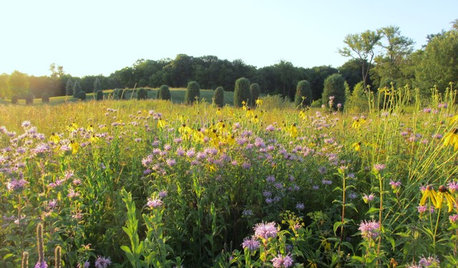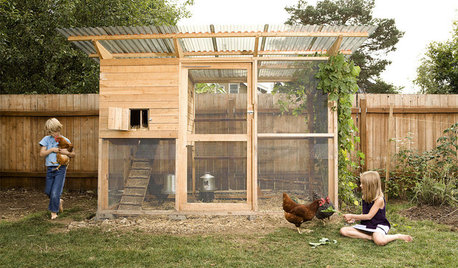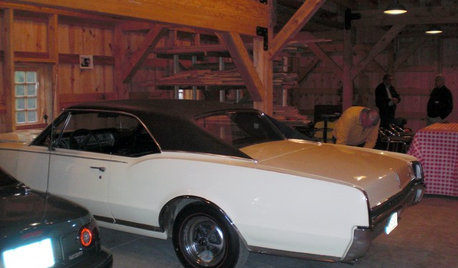What should I do about a hive in my backyard?
jmonette1
15 years ago
Related Stories

GREAT HOME PROJECTSWhat to Know About Adding a Backyard Bocce Ball Court
A regulation court in a relaxed setting helps you get the most from the Italian pastime. Here's what it takes to build one at home
Full Story
GARDENING FOR BIRDSWhat to Know About Birds Nesting in Your Yard
Learn how to observe, record data and help ornithologists with NestWatch’s citizen science project understand bird trends
Full Story
COFFEE WITH AN ARCHITECTWhat My Kids Have Taught Me About Working From Home
Candy and Legos aren't the only things certain small people have brought to my architecture business
Full Story
PETSSo You're Thinking About Getting a Dog
Prepare yourself for the realities of training, cost and the impact that lovable pooch might have on your house
Full Story
GARDENING GUIDESWhat Prairies Teach Us About Garden Design
Wild spaces offer lessons for home gardeners about plants, pollinators and the passage of time
Full Story
PRODUCT PICKSGuest Picks: 20 Finds to Cluck About
If you have or love chickens, you’ll flock to these coops, themed accessories, artwork and more
Full Story
FEEL-GOOD HOMEGuys Tell Us About Their Favorite Places at Home
For Father’s Day, Houzz men show us the places in their homes where they like to hang out
Full Story
FUN HOUZZHouzz Call: Tell Us About Your Dream House
Let your home fantasy loose — the sky's the limit, and we want to hear all about it
Full Story
HOUSEKEEPINGWhat's That Smell? What to Do About Stinky Furniture
Learn how to diagnose and treat pet and other furniture odors — and when to call in a pro
Full Story
DECORATING GUIDESRooster Decorating Worth Crowing About
Put the kibosh on kitsch with these ideas for strutting your rooster-motif stuff in moderation
Full Story





tonybeeguy
jcur88
Related Professionals
Fillmore Landscape Architects & Landscape Designers · Havre de Grace Landscape Architects & Landscape Designers · Montgomeryville Landscape Architects & Landscape Designers · Suffern Landscape Architects & Landscape Designers · Towson Landscape Architects & Landscape Designers · Alamo Landscape Contractors · Boca Raton Landscape Contractors · Columbine Landscape Contractors · Melrose Landscape Contractors · New Cassel Landscape Contractors · Riverview Landscape Contractors · Snoqualmie Landscape Contractors · Stony Brook Landscape Contractors · Kingsburg Landscape Contractors · Brookhaven Outdoor Lighting & Audio Visual Systemsjcur88
txbeeguy
jmonette1Original Author
suzq_fgp
tonybeeguy
buzzbee